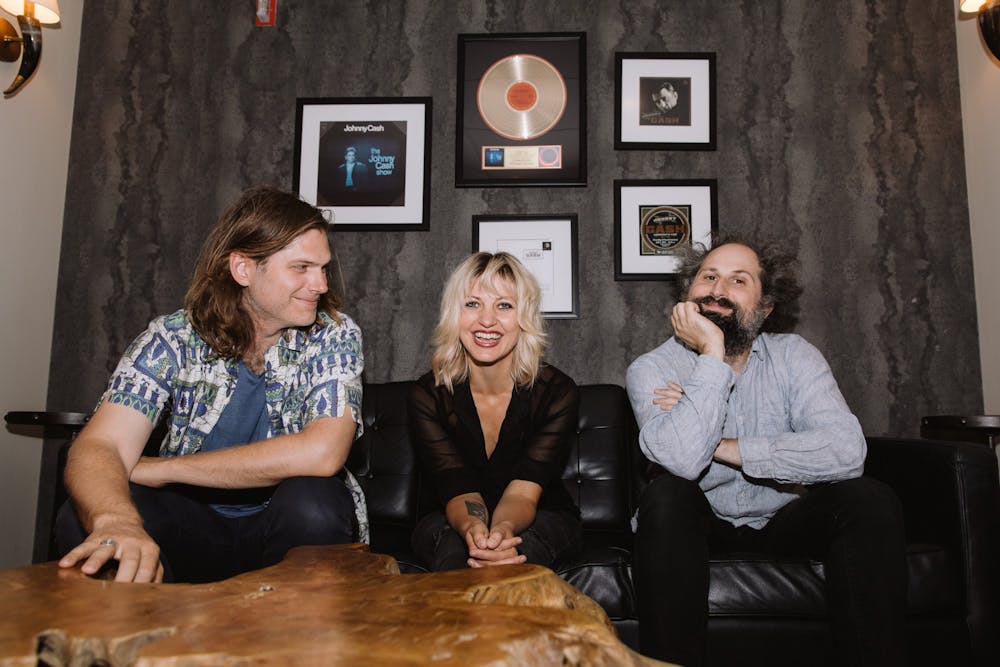It would be hard to find a musician or audience that loathes a good cover. Music, like all art forms, exists to be shared with one another so that we may find some sort of connections with those who live alongside us on this earth. This desire to participate in the shared world of music is perhaps nowhere clearer than in Bonny Light Horseman’s debut self–titled album, which was released on Friday.
Bonny Light Horseman is a folk supergroup, made up of artists Anaïs Mitchell, Eric D. Johnson, and Josh Kaufman, and is dedicated to reviving centuries–old traditional folk songs. Johnson is perhaps the biggest name, as the frontman of the folk rock band Fruit Bats, but Mitchell and Kaufman both hold significant artistic triumphs. Mitchell is a veteran folk singer who recently garnered fame for writing the mega–hit Broadway musical Hadestown, while Kaufman, an indie producer, has collaborated with acts like Josh Ritter, Hiss Golden Messenger, and The Grateful Dead’s Bob Weir. The trio manages to bring together each artist's unique styles and strengths to create an album that anyone could love.
The album opens with the titular “Bonny Light Horseman,” based on a nineteenth–century Irish–English folk ballad. As the song tells the tale of a wandering soldier who may never return home, it sweeps listeners into a different state of mind. Even those unfamiliar with the song will feel transported into slowly–strummed lilting melodies, and upon first listen, there is something so distantly familiar in the lyrics that Mitchell sings, rendering them mesmerizing.
The album features a contrast with “Lowlands,” which appears about halfway through and is believed to have begun as a seventeenth or eighteenth century sea shanty. Primarily sung by Mitchell, the song is filled with guitar and saxophone lines and harmonies that save the truthfully repetitive lyrics from feeling monotonous. Perhaps it's this particular arrangement, or maybe even the song itself, but there's something inexplicably contemporary about it. It slots easily into the universes of Bon Iver or The Head and the Heart. It’s the kind of song that exemplifies the continuity of folk music and how the entire genre bursts with some sort of eternal energy. The old can seem new, and the new can seem old.
The rest of the album is filled with everything in between. From the prayer–like “Bright Morning Songs” to the slightly more pop–like “Deep in Love” to the finale of “10,000 Miles”—the last of which somehow brings tears to one’s eyes in its first five seconds—this album is a love letter to folk music and a testament to its everlasting presence.
In less skilled hands, these 10 songs may lack unity or a sense of why they belonged together. Fortunately, however, Mitchell, Johnson, and Kaufman compiled their unique skill sets to craft their debut album. Forgoing electronic instruments and filling each arrangement with mostly a solo guitar, Bonny Light Horseman managed to tell a cohesive yet dynamic story with this record. Though one could argue the group could have been more innovative, transforming the songs into something completely new, that's not the point. It's not as if these artists are strangers to innovation. Mitchell won a 2019 Tony Award for her unique spin on Greek mythology in Hadestown, and Kaufman has transformed his own music styles more times than one can count.
Bonny Light Horseman, the group and the album, are an experiment in reticence. Instead of striving for shock value or radical reinvention, the trio has mastered the art of the delicate touch. By doing so, they have completed the often difficult task of presenting old works while maintaining the specter of context. The fact that there are no wailing synth or crashing cymbals doesn't mean there's not meticulous craftsmanship present. In fact, the ability to rearrange and reinvent these songs in their signature styles while preserving their original tone is an innovation in and of itself.







